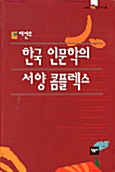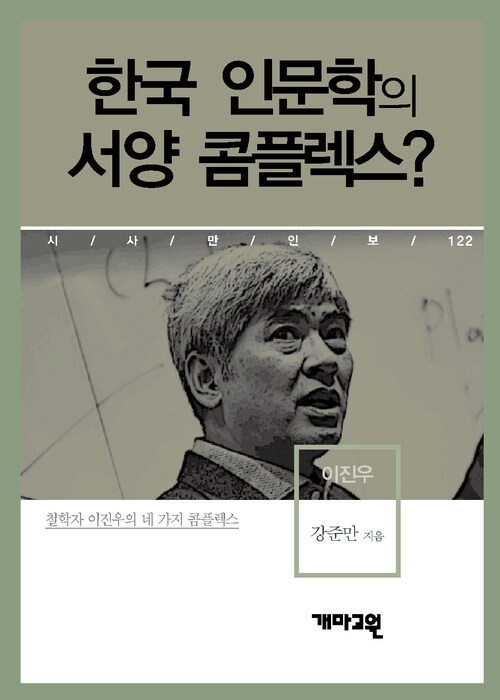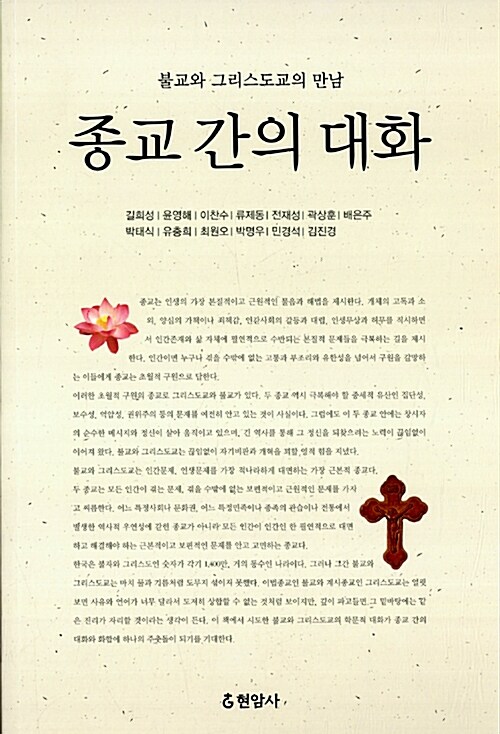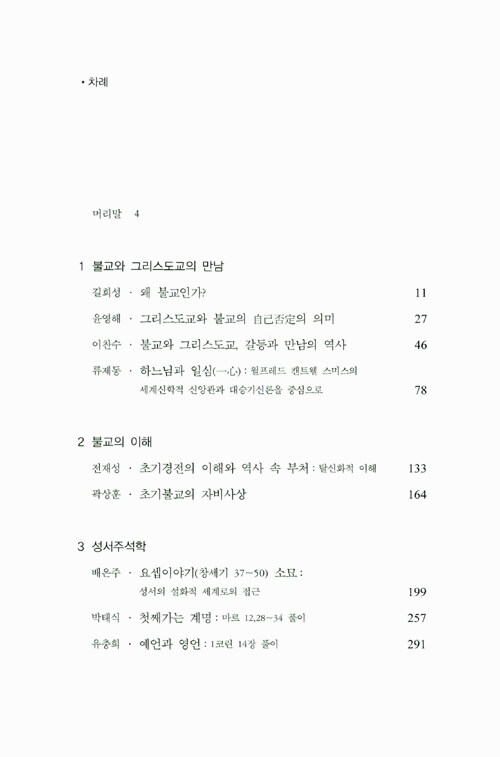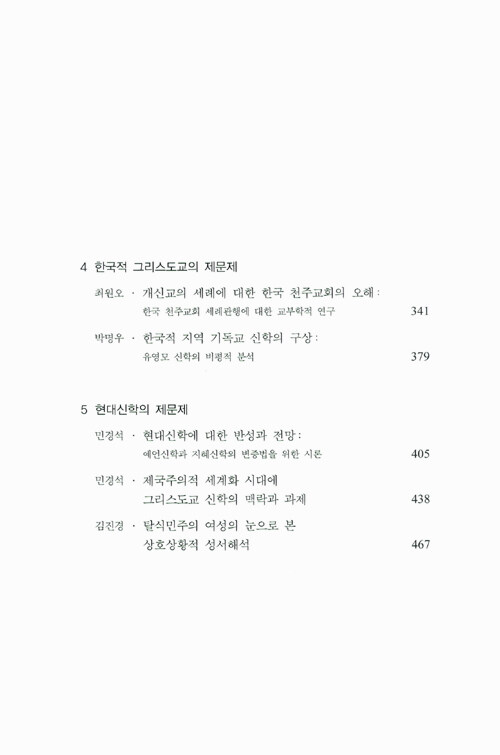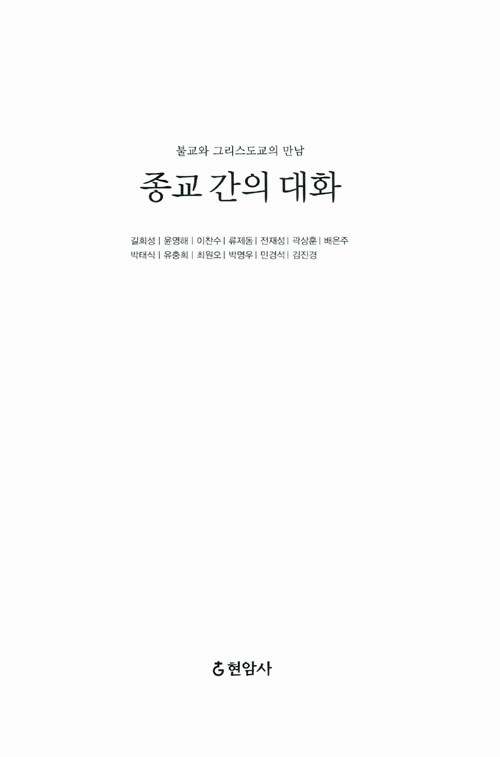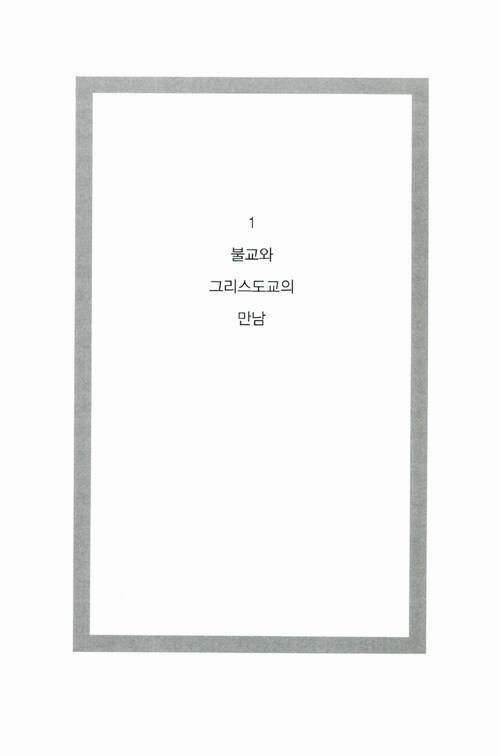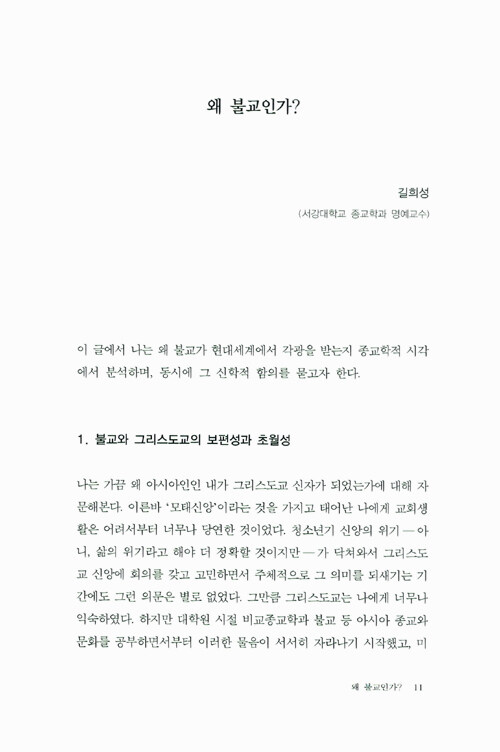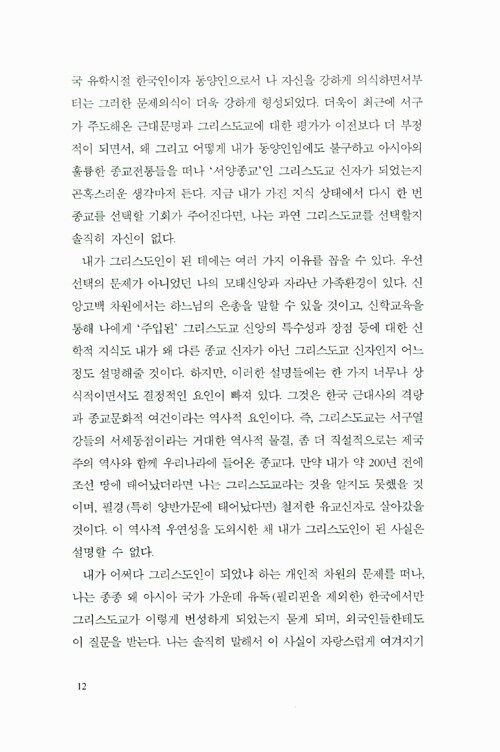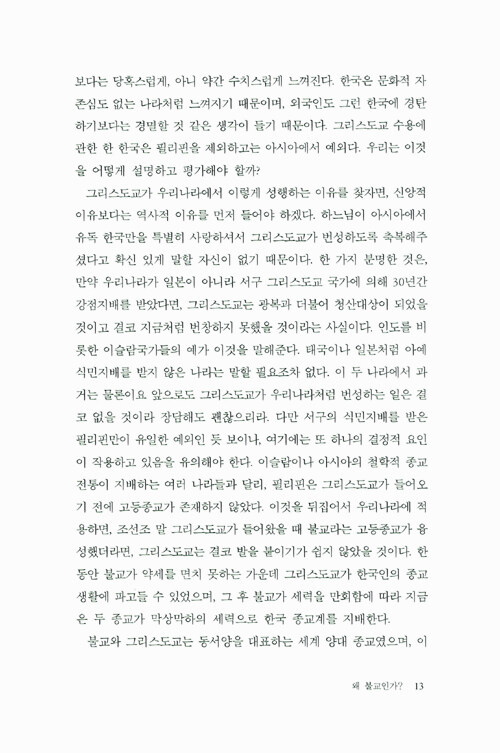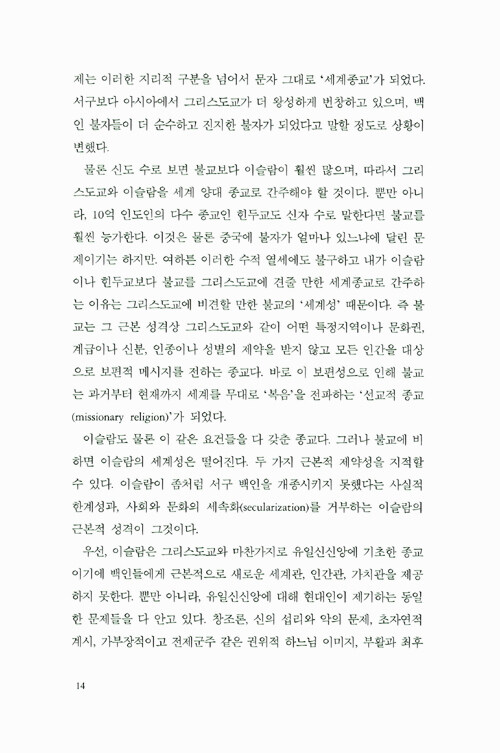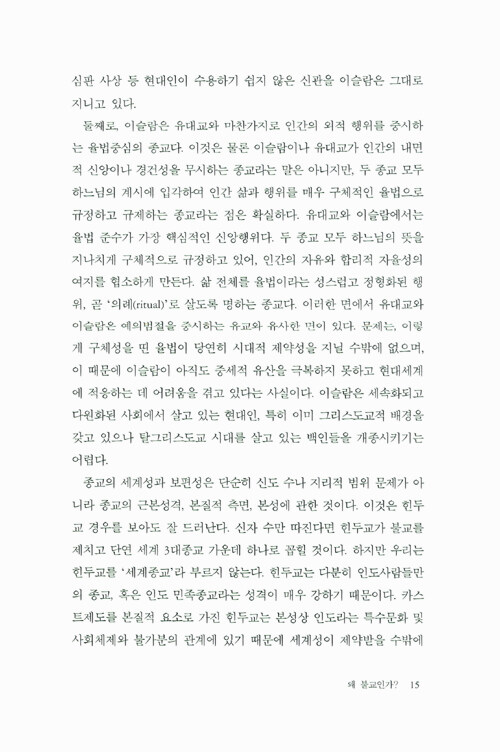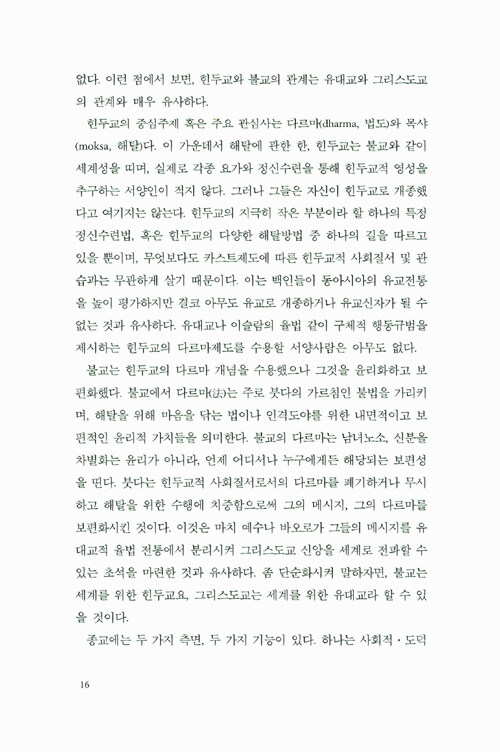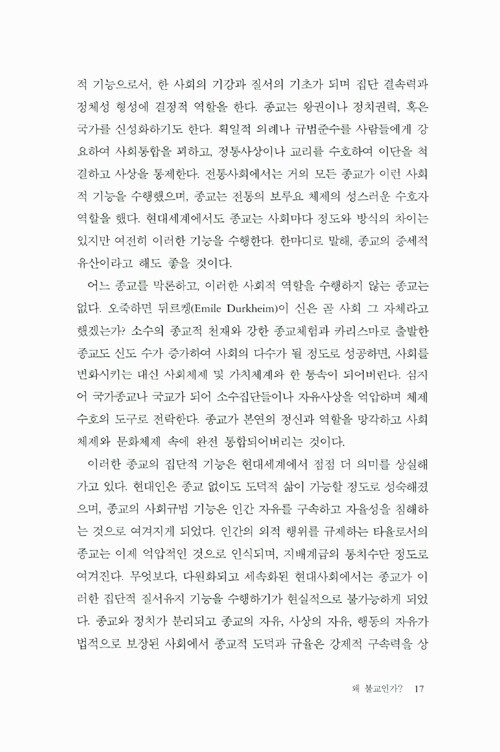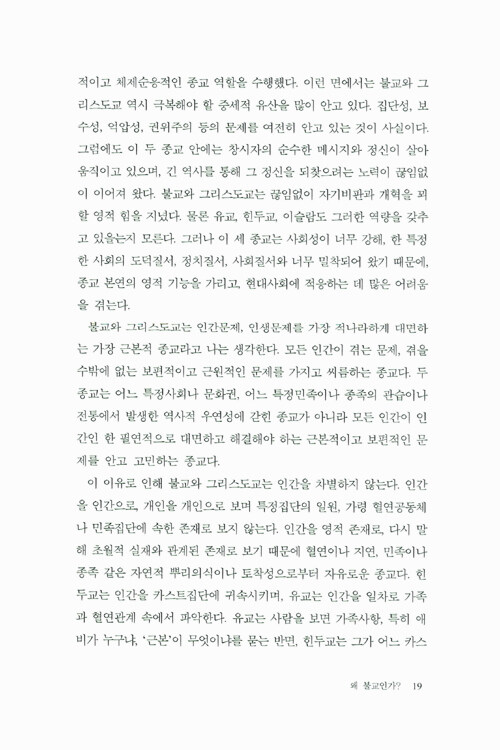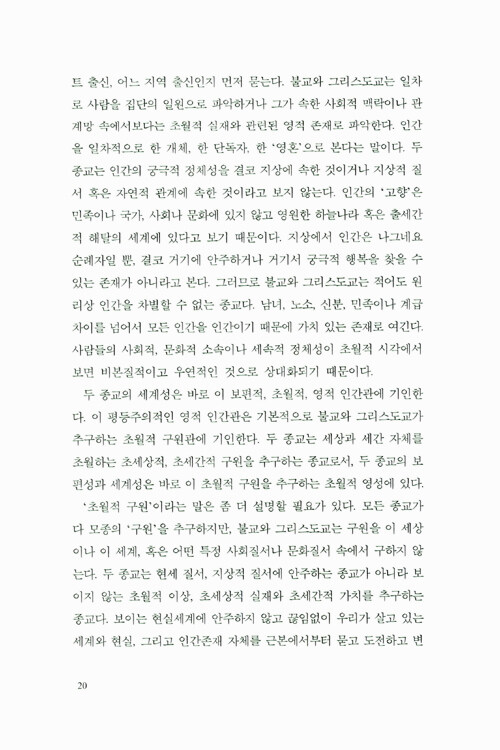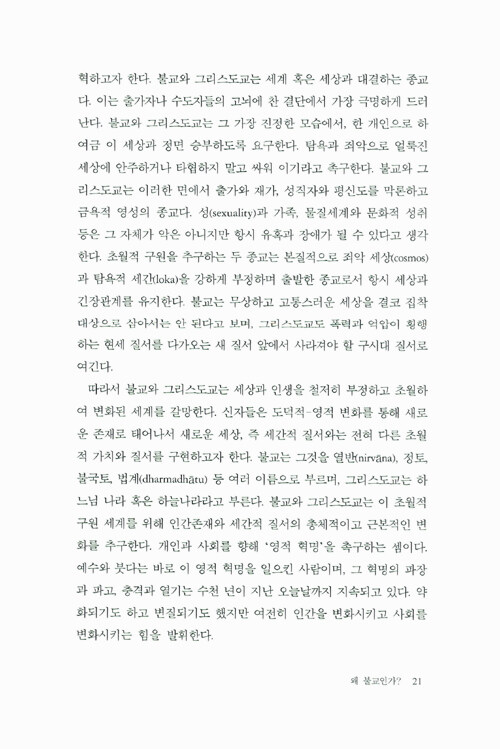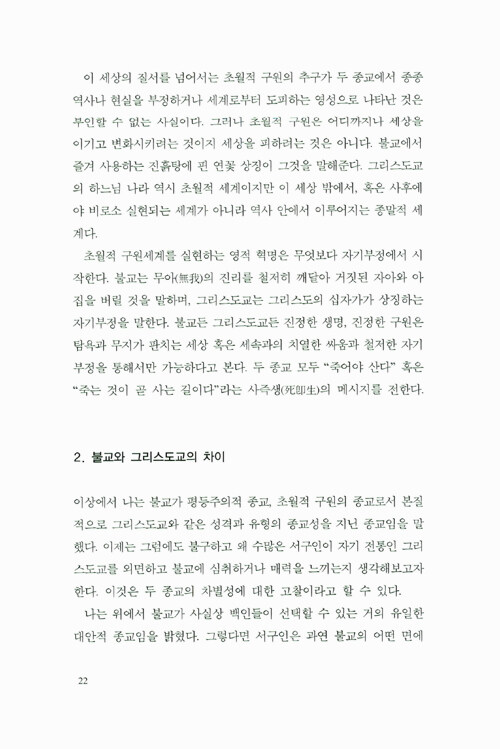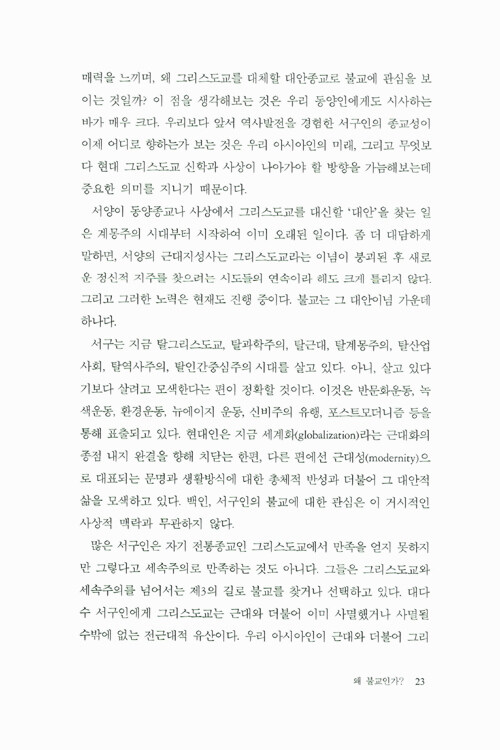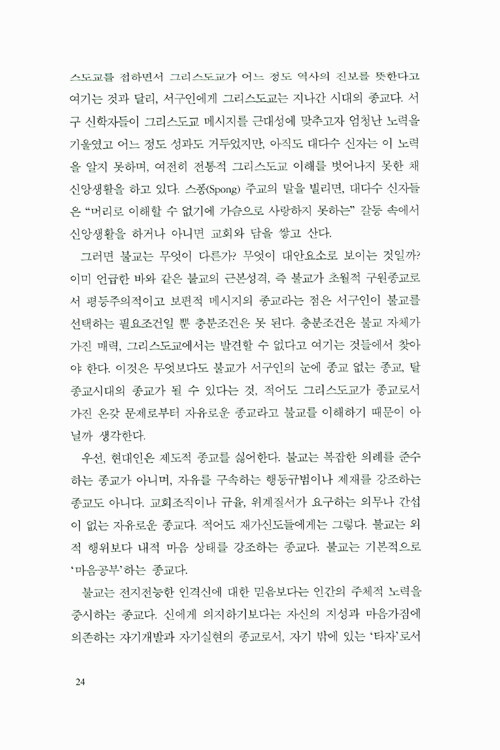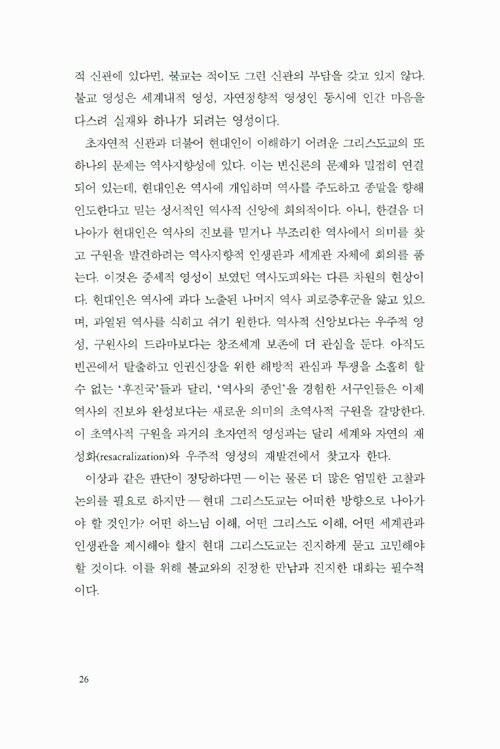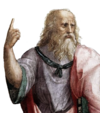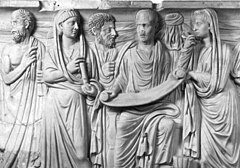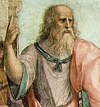Madang, Vol. 23 (June, 2015), 87-106
Embracing and Embodying God’s
Hospitality Today in Asia✽
Kim, Heup-young✽
Introduction
Confucius said in the beginning of the Analects:
Is it not a pleasure, having learned something, to try it out at due intervals?
Is it not a joy to have friends come from afar?
Is it not gentlemanly [the way of a profound person] not to take offence when others fail to appreciate your abilities? (The Analects 1)1)
These famous statements fittingly express this great event of the 7th Congress of Asian Theologians. The Congress of Asian Theologians
※ A keynote lecture at the 7th Congress of Asian Theologians, July 2, 2012, Korean Methodist University, Seoul, South Korea, included in the Proceedings in CTC Bulletin 28:1 (December, 2012).
He is professor Emeritus of Theology at Kangnam University and Visiting Professor of Religion and Science at Hanshin University, South Korea. He is a past president of the Korean Society for Systematic Theology, was a co-moderator of the 6th and 7th Congress of Asian Theologians (CATS), and is a founding member of the International Society for Science and Religion (ISSR).
1) Cf. D. C. Lau, Confucius The Analects (Harmondsworth: Penguin Books, 1979), 59.
(CATS) is established precisely to give Christian scholars and theologians in Asia the opportunity to enjoy these pleasures. Today, we have friends who have come from afar, from the East, the West, and the South. We are going to celebrate the pleasures of learning something together, trying it out at due intervals. With this genuine joy as a Confucian-Christian host, I express my deepest welcome to you, friends from four corners. Furthermore, the theme of this congress is hospitality.
When I was requested by the continuing committee to give this talk, I was puzzled as to whether I am the right person to do this. I was afraid that I would violate the attitude of a profound person dictated in the statements as the third condition, by pushing our dear friends to appreciate my abilities. Furthermore, so far, I have not been so much hospitable as suspicious and critical of the so called “hospitality”of expansive Christianity. My preparation for this talk was not so enjoyable but rather painful. But it offered me an opportunity to recall and reassess my Christian journey from the beginning. And it radically challenged my theology, still under construction, which I call a theology of Dao.
Whatsoever mistakes have been made in historical practice, hospitality is by all means “the practice by which the church stands or falls.”But does my theology of today well suit Christian hospitality in its original meaning? This question demanded my repentance and theological reviews. This morning I will share some of them with you, hoping that it may serve as a case to evoke fruitful discussions for the congress. I begin with two episodes, critical moments for my theological journey, that awakened me but also made me wander through a long maze of hermeneutics of suspicion against Western theological traditions.
Episode One: Mother’s funeral: Triumphant Christian Evangelism? In the preface of my volume, Christ and the Tao (CCA), I wrote:
The most dramatic incident happened at the funeral of my beloved mother. Using my status as the eldest son of my family, which is in fact a Confucian authority, I succeeded in performing her funeral in a Christian style instead of the traditional Confucian one. This act, of course, involved an evangelical motive to make use of this event as an opportunity to proclaim the Good News to these stubborn Confucian relatives, in accordance with the evangelical teaching of the charismatic Korean Church I attended in New York City. However, the result of this change was tragic. My relatives became outrageous and received this as an offensive act, my obvious betrayal of their impeccable tradition. After the funeral, my eldest uncle, the most respected person in my clan, privately summoned me and said with a mournful face: “I don’t care what kind of faith you have. But never have I expected that you will be the one who breaks up our impeccable tradition for a thousand years like this!”This remark struck me like a thunder and made me realize that there is something wrong in my understanding of the new faith in an either-or dualism. In fact, this was the moment I committed myself in the study of Christian theology. My essays here, after all, are some of my theological attempts to respond to this event. )
The church’s attempt to make my mother’s funeral an opportunity for evangelism, by proclaiming Good News to a great number of my relatives, brought about the tragic results in my life, particularly in my relationship with my family and relatives. It became one of the chief reasons for me to become a theologian to study what was wrong with it. This is a case of instrumental use of hospitality that is not so benevolent. Aggressive Christians misled the innocent Christian faith of a new convert, ignorant in theology, and used Christian hospitality as a means for triumphant evangelism and mission.
Since then, I have frequently felt that I am a stranger (or a boundary person) both in my native Confucian community and in my newly adopted Christian faith communities. The aggressive, sometimes too kind but bothering, hospitality of charismatic Christians was a reason motivating my conversion. However, since then, frankly speaking, I have not experienced much genuine hospitality from churches and theological communities in my fatherland. They did not seem to truly welcome me, but were rather arrogant, exclusive, disrespectable of others (people, cultures, religions, etc.), and reluctant to give up the position and the power of being a host, which is a prerequisite for Christian hospitality. Even more rigorously than Korean Confucians who generally hold a genealogy for longer than one and an half millennia, they proudly show off their Christian privileges with a relatively very short period of Christian experiences (less than two centuries), such as three or four generations of Christianity.
Episode Two: A Church in a Southern US Seminary: Hermeneutics of Suspicion.
My hermeneutics of suspicion against Western Christianity began in earnest with an experience I had when I was a freshman in a seminary in the Southern USA. At that time, I was a new convert, through a series of radical spiritual experiences and so full of religious enthusiasm. I had nothing but a strong faith in Jesus Christ. It happened on a Sunday morning just before Christmas, when I was walking toward the beautiful chapel in the campus to attend their magnificent worship service. The sound of elegant music came out from the inside of the building, and the white snow covered all over the surface of the church. It was a really lovely scene for a blessed white Christmas. People, all well dressed and with happy faces, were marching toward the chapel.
All of sudden, however, there appeared an unexpected vision to my eyes. I saw an entirely different scene from that of an otherwise joyful Lord’s Day morning. Under the fine-looking church building, I saw a red fluid, recognizable as human blood! What was it? I asked. Immediately, I could realize that it was the blood of Native Americans (the first nation people) whom white Christian solders massacred and eliminated so that this traditionally Caucasian church could be established. The church looks majestic in appearance: it had a terrible underside history.
It was built on the bloody sacrifice of Native Americans who welcomed the migration of European Christians and showed extraordinary hospitality to welcome these strangers to settle in the new land. In return for the hospitality of the native hosts, these Christian guests not only brutally killed and expelled them but also confiscated their lands to become the selfclaimed hosts of the so-called continent of the great “discovery”of the new world (?). Furthermore, these new hosts theologically and biblically justified their terribly inhuman activities. This is the real story behind the Thanksgiving Day which American missionaries taught us to celebrate as an essential Christian festival. What did they want us to celebrate for? White Christians’cunning betrayal of the innocent indigenous hospitalities of Native Americans? Or Triumphant Christianity’s conquest of the land through genocidal massacres of the natives?
Furthermore, is this the only story of its kind in the history of Christian mission and evangelism? How about the Crusade in the Middle East and the Mission in Latin America, South Africa, Asia, and so on? Do you know the notorious 3Ms; missionaries, militaries, and merchants? With the excuse of proclaiming good news, missionaries came to East Asia (Japan, China, and Korea), sailing on threatening warships with heavily armed militaries. And when a native country was compulsorily opened, merchants followed to begin prosperous trades such as gold-mining and slaves. Isn’t it the real story of the 19th century mission of Western churches in Asia? After knowing this factual story (the awakening of truth), what can you, Christians, say about hospitality? What do you mean by “Christian hospitality”in this post-Christian era?
Christian hospitality, therefore, demands first of all metanoia, genuine repentance. Repentance is a precondition for discussing hospitality. This is not only related to Western Christians but to all Christians, all followers of Jesus Christ. After this introduction, we can now discuss what hospitality means theologically today in Asia. This morning I share some insights to reconfigure the notion of Christian hospitality.
Hospitality
Hospitality is the foundation of Christian faith and an unconditional command of God. Henri Nouwen stated it well, “if there is any concept worth restoring to its original depth and evocative potential, it is the concept of hospitality.” ) Mathew 25:31-46 unmistakably describes an eschatological vision for the judgment of Jesus Christ in the metaphors of sheep and goat. Particularly, it contains an absolute decree for a preferential care for the poor, the thirsty, strangers, the afflicted, the sick, the disabled, and those in prison. There is no excuse by which one can avoid this responsibility. In the Old Testament, stories such as Abraham’s hospitality to strangers enabling Sarah, his barren wife, to produce a son (Isaac), imply God’s commandment, “You should treat strangers as my angels and messengers”(see Gen. 18:1-33).4) In the New Testament, Christ made it even stronger, “You should treat them as me”by saying “whatever you did for one of the least of those brothers of mine, you did for me”(Mt. 25:40). This context of the Christian notion of hospitality makes sense of a provocative claim of minjung theology that we should regard minjung (the oppressed and alienated people) as Christ.
Christian Pohl, the author of Making Room: Recovering Hospitality as a Christian Tradition, said, “Hospitality is not optional for Christians, nor is it limited to those who are specially gifted for it. It is, instead, a necessary practice in the community of faith.” ) A key Greek word for hospitality, philoxenia, is a composite term combining phileo (meaning love) and xenos (meaning stranger). Etymologically and practically, in the New Testament, hospitality means “Love strangers!”The notion of hospitality, therefore, is not “a minimal moral component”nor “a nice extra”for Christians nor something to do with the professional “hospitality industry.” )“Hospitality is the lens through which we can read and understand much of the gospel, and a practice by which we can welcome Jesus himself.” ) It relativizes every Christian doctrine and articulation of metaphysical, ideological, and systematic thought. In terms of the social location, strangers are more important theologically than others. The notion of Christian hospitality demands Christians to pay a preferential option to the poor, strangers, the alienated, the disabled, those in prison, and so on. In this cosmic age, this preferential care for strangers should be further extended to embrace and embody God’s transcendent agapeic love toward the world, including human nature, other lives, and the eco-system on the earth.
Theological Anthropology
The notion of Christian hospitality restores the original doctrine of man (humanity), namely theological anthropology. The passage in Genesis 1:27 states that God created the human according to the image of God (imago Dei). Further, it says that God created human beings, not one but two at the same time. Thus, this passage does not support the modern definition of the human person as an isolated being (ego) separated from others but “the man with the fellow-man”(Adam and Eve). ) Karl Barth argued that the prototype of humanity created in the image of God stands for a joyful Mitmenschlichkeit,”i.e., co-humanity, fellow-humanity, being-in-encounter, being-in-togetherness, or being-for-others. He said that “man is the cosmic being which exists absolutely for its fellows.”The nature of humanity involves “freedom in the co-existence of man and man in which one may be, will be, the companion, associate, comrade, fellow and helpmate of the other.”
This definition of humanity as being-in-encounter and being-intogetherness renders a remarkable parallelism to the Confucian definition of humanity as rén (仁). Rén, the cardinal virtue of Confucianism, generally translated as benevolence, in its Chinese character literally means two people. The Confucian anthropology, conceiving humanity as co-humanity, amazingly converges with the Christian one. Compare this with Barth’s statement that “man is indestructibly as he is man with the fellow-man.” The human person in Confucianism also does not mean “a self-fulfilled, individual ego in the modern sense, but a communal self or the togetherness of a self as ‘a center of relationship.’” ) In both Christian and Confucian traditions, being human originally does not refer to an individual set or persona of substances or essences but a being in interpersonal relationship. ) The original theological anthropology is not based on substantialism and essentialism, but on relationship with God, fellow humans, and nature (in East Asian terms, among Heaven, Earth, and Humanity (天地人); in other words, in a theanthropocosmic relationship).
The Christian notion of hospitality maximizes this relational anthropology in action. It radically challenges us to deconstruct the Western habits of substantial thinking of both classical logos theologies and modern praxis theologies. ) Hospitality basically refers to a practice in personal relationship, neither a propositional doctrine for orthodoxy nor a systematic ideology for orthopraxis. The practice of hospitality is a necessary condition to enter into the real meaning of life in the faithful response to the invitation of the Triune God who graciously invites us to the real life of true humanity in and through the sacrificial hospitality of Jesus Christ. The unconditional decree of hospitality is in fact a blessing for us, by which Christ taught us how to open the door and receive God’s welcoming to enter into the genuine (holy) life. Pohl confessed, “Over and over again, I’ve come to see that in God’s remarkable economy, as we make room for hospitality, more room becomes available for us for life, hope, and grace.” ) Hospitality, as universal benevolence unconditionally executed in the imitation of the lifeact of Jesus, is a sufficient condition for radical humanization, the realization of true humanity as being-in-encounter, being-in-togetherness, and being-for-others. As a radical humanization, hospitality refers to a process par excellence of sanctification and self- cultivation. Furthermore, this universal benevolence does not have limits and boundaries, “embracing neighbors and strangers, friends and enemies … the good and gentle, but also … the evil and unthankful … every soul God has made”(John
Wesley). )
Inclusive Humanism: The Christian notion of hospitality radically challenges us to revise the exclusive humanism dominant in the modern West since Descartes’dualist rationalism. Rather, it endorses such inclusive humanism as traditionally supported by Confucianism. Whereas exclusive humanism “exalts the human species, placing it in a position of mastery of and domination over the universe,”inclusive humanism “stresses the coordinating powers of humanity as the very reason for its existence.” Confucian scholar Cheng, Chung-ying criticized that “humanism in the modern West is nothing more than a secular will for power or a striving for domination, with rationalistic science at its disposal.”“Humanism in this exclusive sense is a disguise for the individualistic entrepreneurship of modern man armed with science and technology as tools of conquer and devastation.”In contrast, the inclusive humanism that is rooted in Confucianism “focuses on the human person as an agency of both selftransformation and transformation of reality at large. As the selftransformation of a person is rooted in reality and the transformation of reality is rooted in the person, there is no dichotomy or bifurcation between the human and reality.” )
This daring Confucian argument sounds far more relevant to the original Christian meanings of humanity (being-in-encounter and being-forothers) and hospitality (universal benevolence) than to modern theological anthropologies based on exclusive humanism. Over against the essentialist and exclusivist view of the human person, inclusive humanism stresses the
“between-ness”or “among-ness”of the person. (The Chinese character for the human being 人間 connotes in-between-ness). In inclusive humanism, a person is not so much a static substance as a network of relationships in constant change (Yì). ) Inclusive humanism based on the ontology of humanity as being-in-relationship or being-in-togetherness was splendidly expressed by a Confucian scholar in the 11th century, Zang Zai.
Heaven is my father and Earth is my mother, and even such a small creature as I finds an intimate place in their midst. Therefore, that which fills the universe I regard as my body and that which directs the universe I consider as my nature. All people are my brothers and sisters, and all things are my companions.… )
Christology:
The Christian notion of hospitality reinforces Christology as the foundation of theological anthropology. Jesus Christ, as the personification par excellence of the imago Dei, is the supreme paradigm of humanity as cohumanity or a being for others. The human being is “modeled on the man Jesus and his being for others … God created him [man] in his own image in the fact that he did not create him alone but in the connexion and fellowship … God himself is not solitary … [but the triune] God exists in relationship and fellowship”(as the Father, the Son, and the Holy Spirit). ) Hence, the paradigm of humanity as being-in-togetherness is nothing other than a copy or a mirror of the intratrinitarian life of the Triune God. Between the being of God (as Creator) and the being of human (as creature), “there is correspondence and similarity;”namely, “analogia relationis”(i.e., an analogy of relation). This analogy of relation was completely fulfilled in the humanity of Christ, the root paradigm of humanity. In this fulfillment, Jesus was by no means an exclusive humanist, but on the contrary showed a most inclusive form of humanism. Christ was the prototype of being in between-ness or among-ness (or as the “connecting principle”); between human-to-God, human-to-human, and human-to-nature.
Reconciliation in these relationships in which Jesus is in between-ness, among-ness, and the connecting principle has been achieved by Christ’s sacrificial acts, which is in fact divine hospitality. The incarnation of Jesus and his crucifixion on the cross were the practices par excellence of embracing and embodying God’s hospitality. In a nutshell, the sacrificial life-act of Jesus Christ is God’s salvific hospitality to the human race. In sum, hospitality is a practice of fulfilling the mission of being human as being-in-between and being-for-others, imitating and following the great examples of hospitality Jesus presented us throughout his life.
As Jesus practiced it, hospitality demands a radical denial of one’s desires and self-empting (the spirituality of kenosis) for the sake of others. It resonates with an attitude of respect and reverence (敬, gyeong in Korean or jìng in Chinese) rather than an aggressive love (in one’s own way). Gyeong stands at the heart of Korean Neo-Confucian thought culminated by Yi Toegye (1501-1570). It entails not only epistemic humility but also profound sensitivity to the sufferings of others and things in nature. Gyeong signifies the state of human mind-and-heart ready to realize its ontological psychosomatic union with others and nature, to fulfill the theanthropocosmic vision (the communion among the triad of Heaven, Earth, and humanity, 天地人). By attaining this state of mind, a person can possess an ability to hear the voices and feel the pain and sufferings of people and nature (the virtue of commiseration) and can exercise beneficence (rén) the attributes of which Confucianism calls Four Beginnings, namely, humanity, propriety, righteousness, and wisdom. )
Trinity:
The notion of hospitality is ultimately based on the immanent and the economic Trinity and their perichoresis. Hospitality is a triune welcome of humanity in the life of the Trinity (the immanent Trinity). The triune God sent their only son to embrace humanity, which is an economy of the Trinity. The Incarnation of Jesus Christ is an embodiment of the Triune hospitality for the world. The Crucifixion of the God-man Jesus was the climax of the drama of divine hospitality. The blessings and joy of the Resurrection indicate the gifts to be received by the person who condescends, crossing boundaries, limitations, differences, and idiosyncrasies, to execute hospitality to others including strangers. The perichoresis (the Father in the Son and the Son in the Father) notes the prototype of humanity as co-humanity, being-in-fellowship, being-intogetherness, or being-in-between. Hospitality as an active participation in the process of radical humanization is an act of copying this Triune coinherence (perichorsis) on our existences.
Creation is a masterpiece of God’s hospitality to beings in the universe. Through Jesus Christ, God opened the door to enable us to enter into the life of the Triune immanence. The Economic Trinity is a supreme act of divine hospitality welcoming humanity in the world. Our hospitality in response to this gracious Triune hospitality is in fact for us to open the gateway to the glorification of humanity beyond sanctification. The Trinity embodied divinity into humanity and embraced humanity in divinity in and through the theanthropocosmic drama of Jesus Christ, which is the mystery of salvation. And it is in fact the ultimate foundation and source for hospitality. As a Christian mission is ultimately the mission of God (Missio Dei), hospitality is finally not a human, ecclesiastical, nor religious deed, but an infused reflection of God’s love in us. “God is already working in the lives of the people who come and in the lives of those who welcome them.” ) Doing hospitality does in fact signify embracing and embodying God’s hospitality, by participating in the magnificent, gracious cosmic drama of the Trinity. The living God becomes the dialogical and ontological partner of the human, which Barth called “God’s sovereign togetherness with man.” ) God’s deity, which already has “the character of humanity,” “includes”our humanity.
New Paradigm of Theology: a Theology of Dao (Theo-dao)
The notions of Christian hospitality corrects the defective habit of Western Christian thinking since its contextualization with Greek thought substantialism, essentialism, and either-or dualism - both on a doctrinal, metaphysical level and on an ideological, societal level. The fundamental issue is not about essences at all. In fact, there is nothing like an unbreakable building block, but rather the natural sciences continue to prove that the structure of the universe is instead basically relational as in the relationship between protons and electrons. The foundation of the world does not consist in unchanging substantial essences, but in relationship. As we have seen already, humanity is particularly and by definition relational. The Christian notion of hospitality announces that relationship is more important than everything else. Thus Christian theology should be relational so as to embrace and embody the altruistic and salvific partnership of Jesus and the gracious hospitality of the Triune God.
The Christian notion of hospitality, I may argue, endorses that a theology of the Dao (Way) is a more proper theological option than classical, dogmatic logos-theologies and modern, liberationist praxistheologies. ) For both logos-theologies and praxis-theologies are basically formulated on a substantialist/essentialist and on either-or (either the logos or the praxis) thinking. The former is more doctrinal, while the latter more ideological. In contrast, the tao by definition refers to the unity of knowing and acting and transcends the dualism of logos and praxis. In terms of the end part of First Corinthians 13, if faith is for the logos-theology (a faithseeking-understanding, focusing on orthodoxy, the right doctrine for the church) and if hope is for the praxis theology (a hope-seeking-practice on orthopraxis, the right action for the Kingdom of God), then love is for the dao theology (a love-seeking-dao, on orthotao, the right way of companionship). Certainly, hospitality is basically a matter to do with love rather than with faith and hope. “Our hospitality both reflects and participates in God’s hospitality. It depends on a disposition of love because, fundamentally, hospitality is simply love in action.” )
The Christian notion of hospitality that is displeased with the inhumanness of an institutional and professional treatment commends us to revisit the doctrine of a personal God. The Christian God in the Bible is not so much metaphysical (as often appeared in the logos theology), nor ideological (as in the praxis theology), as relational (interpersonal or intersubjective) in the fullness of personal connection with the complexity of human emotion. God incarnated in Jesus Christ is not so much a sovereign, omnipotent, and apathetic host of divinity, but a fragile, vulnerable, and sensitive guest in humanity. God in Jesus Christ is a human person, a companion on the road with us, as common pilgrims, sojourners, and strangers in the world. Thus, a relational theology of the Way (Dao) is a more proper paradigm for Asian theology! God in Jesus Christ is after all the hospitality of the Triune God toward us to enable us to return to the original humanity in harmony with the divinity and others. Hospitality is the dao (way) of humanization par excellence. Rather than doctrine or ideology, thus, the theology of the Tao focuses on the way of life together with a preferential option to the yin side of the universe including strangers, minjung, and dalit, which precisely means a radical humanization. A letter from L’Arche stated that “a society, to be truly human, must be founded on welcome and respect for the weak and the downtrodden.” )
New Interpretation
The notion of hospitality, the cornerstone of Christian faith, needs a new interpretation - a hermeneutics of reconstruction - in this post era of socalled post-colonialism, post-Orientalism, and post-Christianity (postChristendom). Not to mention the genocidal exploitation of European Christians in both the North and South American continents! After the experiences of the 19th century colonialism of Western Christianity, furthermore, we, Asians, are particularly suspicious of Christian hospitality in a positive and expansive manner. Before mentioning any type of hospitality, we would ask of the host a total kenosis of oneself (selfnegation), a full respect or reverence for guests, and a partnership among strangers, just as the Triune God did for us in and through the life of Jesus Christ. Jesus completely self-emptied himself until death, paid the fullest respect to the people washing their feet, and lived among the minjung comforting and healing them so as to accomplish his mission of “embracing and embodying God’s hospitality”for us. We, Asian disciples of Christ, need such an imitatio Christi today in Asia! That is to say, “Embracing and Embodying God’s Hospitality Today in Asia,”the theme of the 7th Congress of Asian Theologians.
Hospitality, an unconditional decree to be a Christian, needs a spirituality of emptiness or nothingness rather than that of substantial, essential, or metaphorical something; traditionally speaking, it should be apophatic rather than kataphatic, via negativa rather than via positiva. At this juncture, we should note side-effects of the golden rule, the core of Christian faith and Confucianism. The positive golden rule (Love others as yourself), favored in the Christian West, can be misread as “Love others in your own ways!”An American scholar studying East Asian thought, Robert E. Allinson, made the critique that the positive golden rule caused the attitudes of “epistemological immodesty”and “ethical hubris,”and makes one prone to treating others as “strangers”or “enemies”in a conflictcomplex (Enemies, Strangers, or Partners).24) Greek dialectical dualism reinforced by an expansive nomadic ethos underlined these attitudes of the conflict and aggressive model. ) These erroneous attitudes would be a rootcause for the modern failure of the arrogant Western Christian mission in Asia.
However, (East) Asia is rather the world of harmony, exemplified by the Great Ultimate in the yin-yang relationship. In the yin-yang interdependent, dialogical relationship, both yin and yang are always interchangeable and exist together. The relationship between a host and a guest would better be understood in this dynamic relation. As yin can become yang anytime, it is always possible for a host to turn into a guest, and vice versa. Their existential status may look different, but ontologically, however, they are the same partners among strangers. In this world of rén (being-in-togetherness), the habit of the negative golden rule (Do not do to others what you do not want them to do to you!) is more appreciated, as
“epistemological modesty”and “ethical humility”are crucial virtues for treating others as ‘guests’or ‘friends’in an effort to bring harmony in the world. Christian hospitality in the mode of the positive golden rule (Love others in my own way!) could bring out maleficent side-effects. Rather an attitude of the negative golden rule (Love others in their own ways!) would be more preferable in order to avoid epistemological immodesty and ethical hubris. As Christian Pohl said, “Humility is a crucial virtue for hospitality, and especially important in keeping hosts’power in check. Power is a complicated dimension of hospitality.” ) Yes! However, here in Asia, we need a more fundamental change of attitude. As Yale theologian Miroslav Volf said better, “the will to give ourselves to others and ‘welcome’them, to readjust our identities to make space for them, is prior to any judgment about others, except that of identifying them in their humanity.” )
God is the only unconditional host. The nucleus of the Christian story is that the sovereign host-God emptied Godself completely to become a vulnerable human-guest and a stranger in this world. The being becomes a non-being (the being in non-being) so that we non-beings can become the being (a non-being in being). This is a key to understand the mystery of Jesus, i.e., God’s hospitality par excellence. The theme of Embracing and Embodying God’s Hospitality Today in Asia would be ultimately summarized in the question, “What would Jesus do to strangers and others in Asia if he came in this age of migration, globalization and science today?”What would be do and how would he welcome immigrant workers, multi-cultural marriages, refugees, the disabled, prisoners, people in other religions, other beings on this susceptible planet, possible extraterritorial (ET) guests from outer space, beings which come into existence by manipulations of science and technology, and so on? In the Asian context, furthermore, the hospitality list should include not only those in the present and the future but also those in the past, particularly ancestors.
This week, we, Asian theologians, have gathered together in Seoul to discuss these important issues. The CATS is so far the only existing platform and theological space in the world where Asian theologians freely speak for themselves, collectively together, without feeling timid against yet dominant Western theological discourses. Although it is a meeting of a small number, I believe, it will become a historically significant event for Christians and churches in both Asia and the rest of the world, particularly anticipating the 10th General Assembly of the World Council of Churches to be held in Busan next year.
Asia, called the home of world religions, is the most diversified continent culturally, religiously, ideologically, politically, and perhaps economically. It is the predicted place for the so called “clash of civilizations.”Perhaps, the Korean peninsula would be a pinnacle of such a clash or an encounter; in a nutshell, both between the West and the East and between the North and the South. The symbol of the Korean national flag, the Great Ultimate in the dialogical yin-yang, would metaphorically prophesy this time in history. The duality of yin-yang is not permanently fixed but always interchanging. It is not an “either-or,”but a “both-and.”It represents dynamic phenomena in temporality to create and compose the ultimate wholeness, by not denying their distinctions, particularities, and idiosyncrasies.
Finally, hospitality is based on “God’s Great Yes!”for us to join the Reign of God. It is our response to God’s invitation to the heavenly banquet, in terms of sacrament, Eucharist. Christian hospitality is to celebrate this grace by inviting and welcoming friends, colleagues, neighbors, aliens, sojourners, the afflicted, and the disabled in response to this divine blessing. We, Asian theologians, as yet strangers in Christian theology, need to continue a corporate endeavor to open our spaces to “sing our own songs” and “own up to our own metaphors.”At the same time, we need to let fellow friends in Asia do the same thing as humble partners among strangers. Jesus, both a human stranger and the divine host, is the Christ who has established once and for all the ontological space for us to be fully human. The Congress of Asian Theologians is the space where we Asian theologians gather together to sing our own song and own up to our own metaphors. We, members of the CATS, are all partners among strangers. Today, we gathered here to satisfy the command of God to attain our fullness as humans. Now, let’s begin our fascinating discussions. May God dearly bless you all, and may His hospitality abundantly prevail throughout the congress!
Abstract
Hospitality is based on “God’s Great Yes!”for us to join the reign of God. It is our response to God’s invitation to the heavenly banquet in terms of sacrament, Eucharist. Christian hospitality is to celebrate this grace by inviting and welcoming friends, colleagues, neighbors, aliens, sojourners, the afflicted, and the disabled in response to this divine blessing. Asian theologians, as yet strangers in Christian theology, need to continue a corporate endeavor to open our spaces to “sing our own songs”and “own up to our own metaphors.”At the same time, we need to let fellow friends in Asia do the same thing as humble partners among strangers. Jesus, both a human stranger and the divine host, is the Christ who has established once and for all the ontological space for us to be fully human. Thus, Asian Christians need to sing our own song together and own up to our own metaphors in order to accomplish the command of God to attain our humanity in fullness (rén, co-humanity).
Key Words
Christian Hospitality, Theological Anthropology, Christology, Trinity,
Inclusive Humanism, Dao, Rén, Kyeong
Bibliography
Allinson, Robert E. “The Ethics of Confucianism & Christianity: the Delicate Balance,”Ching Feng 33:3 (1990): 158-73.
Kart Barth. The Church Dogmatics (CD), Vol. III/2. Trans. G. W. Bromiley, et. al. Edinburgh: T. & T. Clark, 1960.
. The Humanity of God. Trans. John Newton Thomas and Thomas Wieser.
Atlanta: John Knox Press, 1960.
Chan Wing-tsit. A Source Book in Chinese Philosophy. Princeton, NJ. Princeton University Press, 1963.
Kalton, Michael C. To Become a Sage: The Ten Diagrams on Sage Learning by Yi T’oegye. New York: Columbia University Press, 1988.
Kim Heup Young. Wang Yang-ming and Karl Barth: a Confucian-Christian Dialogue. Lanham, New York, London: University Press of America, 1996.
. Christ and the Tao. Hong Kong: Christian Conference of Asia, 2003.
Lau, D. C. Confucius The Analects. Harmondsworth: Penguin Books, 1979.
Liu, Shu-hsien and Allinson, Robert E. Harmony and Strife: Contemporary Perspectives, East & West. Hong Kong: The Chinese University Press, 1988.
Nouwen, Henri. Reaching Out: The Three Movements of the Spiritual Life. New York: Image Books, 1975.
Pohl, Christian D. Making Room: Recovering Hospitality as a Christian Tradition. Grand Rapids, Mich.: Wm. B. Eerdmans Publishing Co., 1999.
Wilhelm, Richard. Trans. The I Ching or Book of Changes. 3rd ed. Princeton, NJ: Princeton University Press, 1967.
Volf, Miroslav. Exclusion and Embrace: a Theological Exploration of Identity, Otherness, and Reconciliation. Nashville: Abingdon Press, 1996.
Wesley, John. Works of John Wesley, Vol. 10: Letters, Essays, Dialogue, Addresses. Grand Rapids, Mich.: Baker House, 1978.
Received : 2015. 2. 20 Revised : 2015. 6. 1 Accepted : 2015. 6. 15
